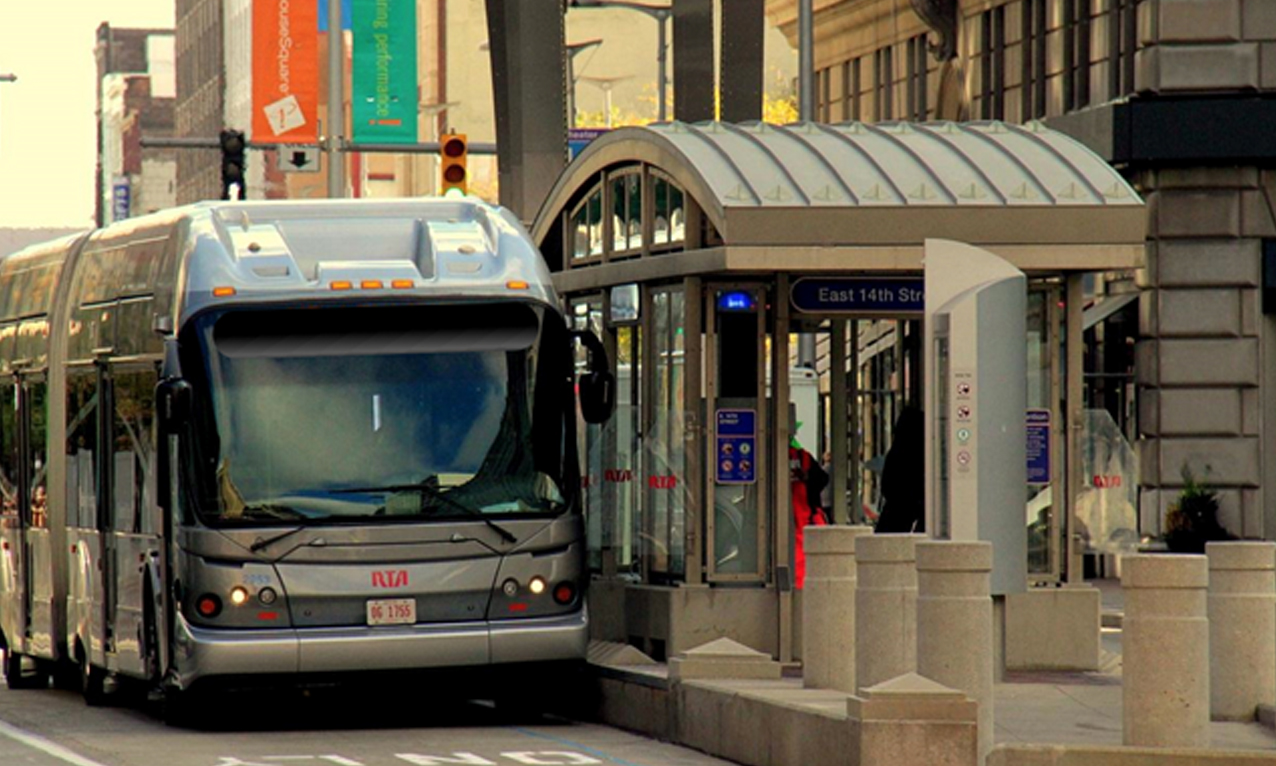
The New NY Bridge will help integrate mass transit options similar to the Cleveland HealthLine bus rapid transit system, pictured above.
The goal of the New NY Bridge is to improve travel between Westchester and Rockland counties, and throughout the lower Hudson Valley. However, the bridge itself is only part of the equation. Public transportation efforts will also be integrated to serve the region’s transit needs.
As New York state prepared to move forward with the design and construction of the New NY Bridge, Governor Andrew M. Cuomo called for a Mass Transit Task Force (MTTF) to develop transit recommendations for the I-287 corridor in Rockland and Westchester counties.
The 31-member MTTF included local and regional stakeholders, elected officials, and transportation experts and advocates. New York State Thruway Authority Executive Director Thomas J. Madison and New York State Department of Transportation Commissioner Joan McDonald were asked to serve as the co-chairs. The task force was charged with creating a public, transparent and collaborative process to develop a package of short-, mid- and long-term transit recommendations.
In February, after a year of meetings, studies and analysis, the MTTF presented its final recommendations to the public, Governor Cuomo, the Thruway Authority and the Department of Transportation.
The MTTF’s short-term recommendation is for a bus rapid transit (BRT) system that would be simpler, faster and more reliable than the bus service that is available today, and would fundamentally change transportation options in Westchester and Rockland.
The BRT system could serve as many as 10,150 additional riders per day when compared to existing bus services in the corridor. It will expand and enhance the existing transit system by taking advantage of extra lane capacity on the New NY Bridge, operating in the extra-wide shoulder area of the new crossing. It is important to note that the new bridge is being designed and constructed with the structural strength and capacity to support commuter or other rail transit in the future, and rail transit options are included as long-term recommendations by the MTTF.
While the proposed BRT system maintains connections to Metro-North Railroad, it goes beyond just connecting commuters to the rail system. The travel markets within and between Rockland and Westchester are significantly larger than travel from either county to Manhattan. The proposed system aligns with these travel markets while still serving New York City-bound commuters.
The proposed BRT system is customized for the region and would be complemented by existing and enhanced transit infrastructure in the two counties. This will allow BRT vehicles to stay on schedule, and move quickly and reliably even through traffic congestion. The goal is to make infrastructure changes in the coming years, so that the BRT system can be implemented the day the New NY Bridge fully opens in 2018.
The members of the MTTF, representing different interests, communities, and concerns, rose to the challenge of meeting the needs of the entire region. Their collective efforts resulted in a set of consensus recommendations that will help provide meaningful mass transit choices in the lower Hudson Valley. From the day the New NY Bridge opens, the BRT system and other transit proposals by the MTTF would improve mobility within the region, support sustainable growth, enhance access to major employment centers and allow for their growth, and increase the resiliency and redundancy of the transportation network all along the I-287 corridor.
